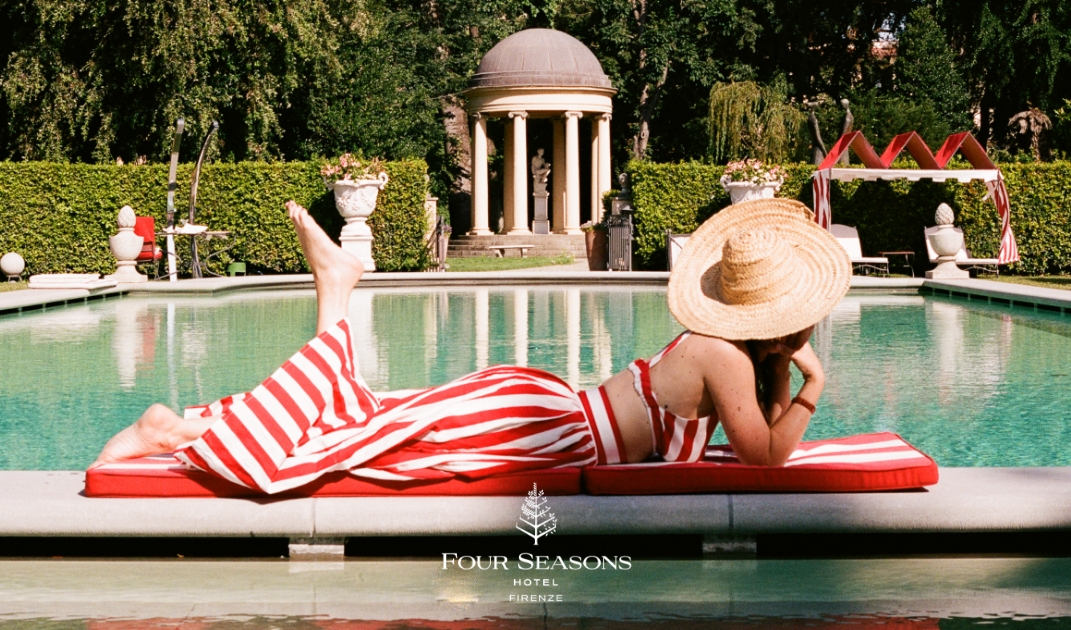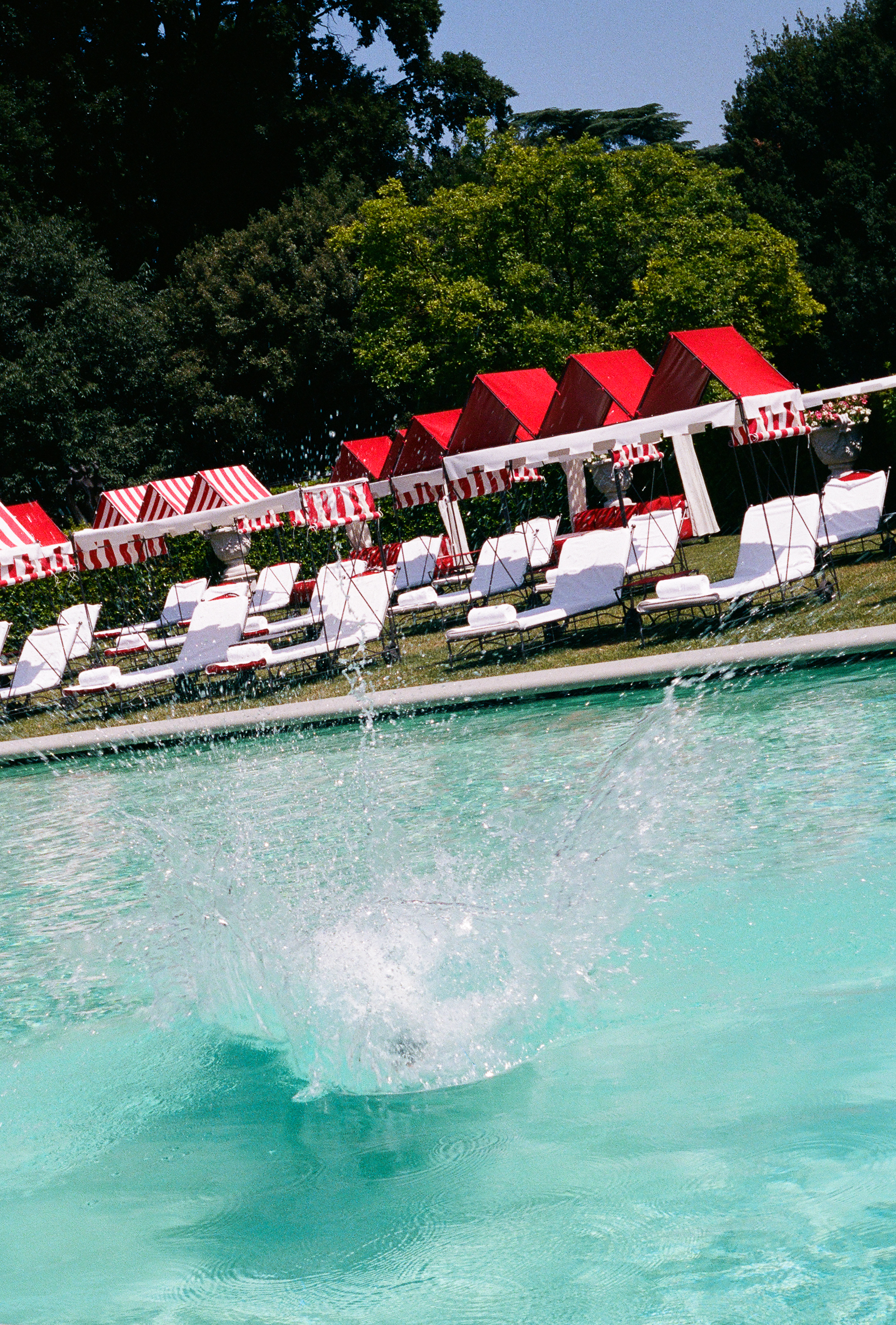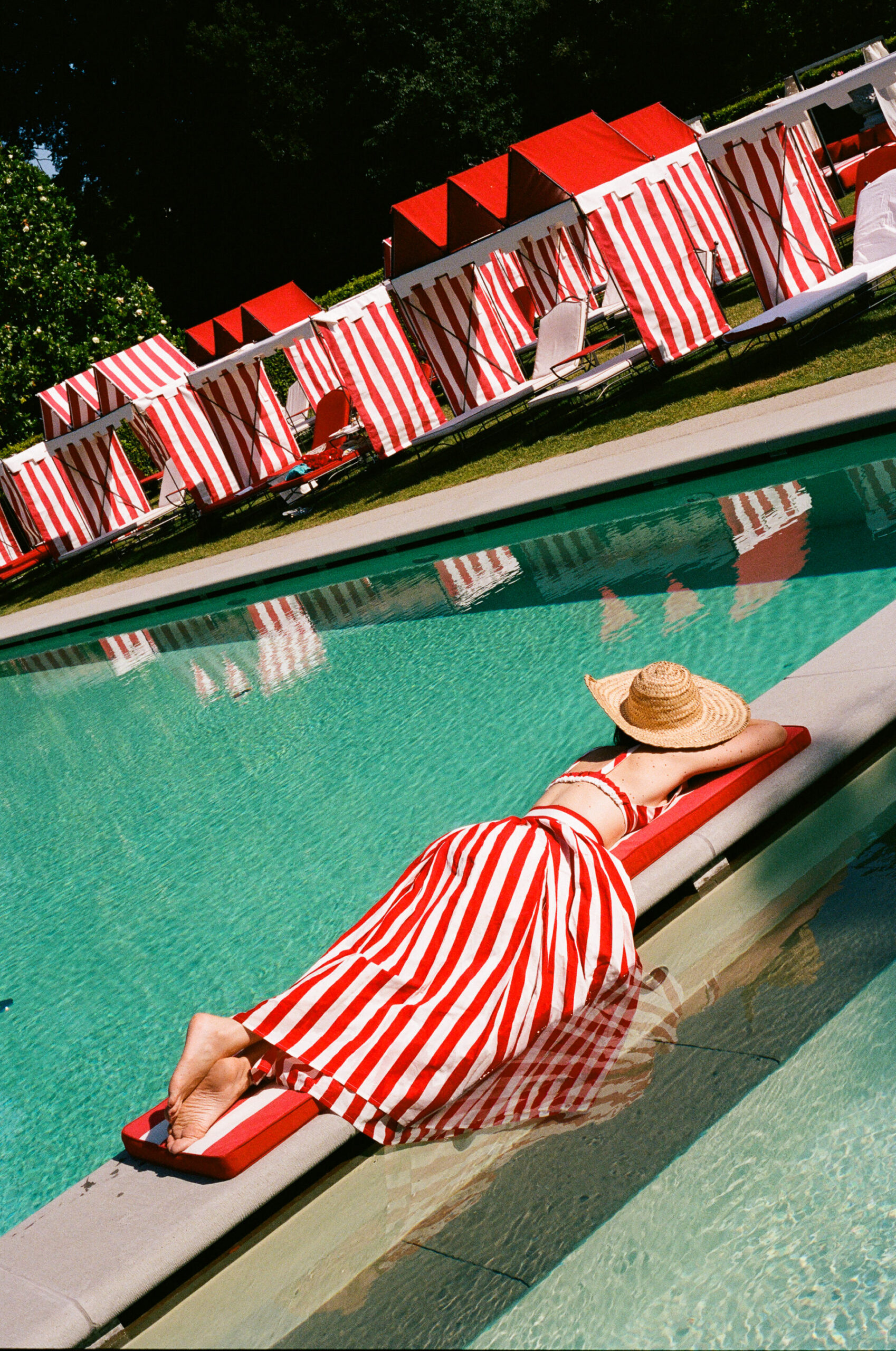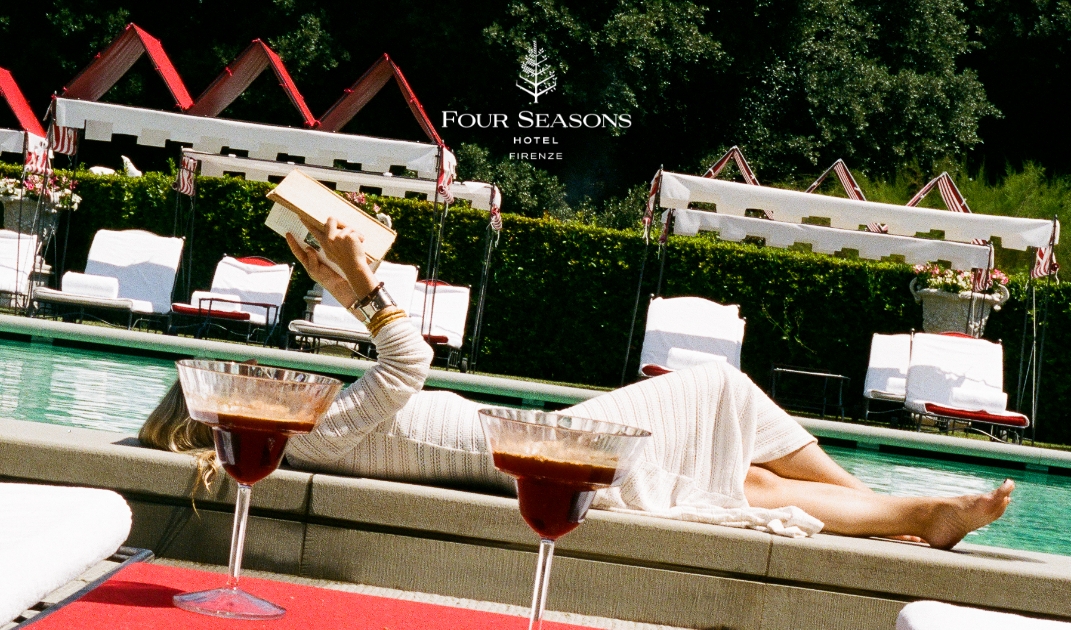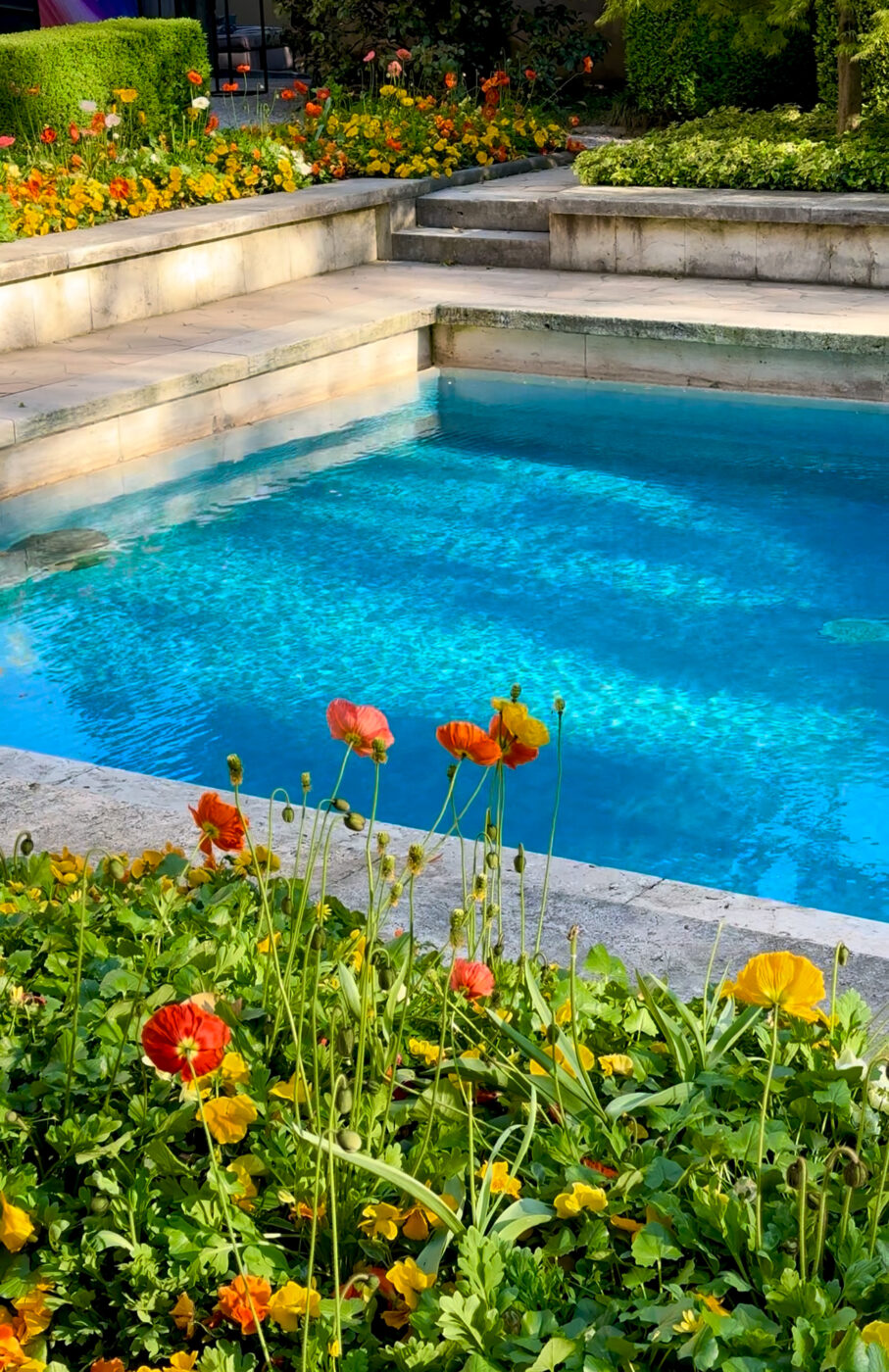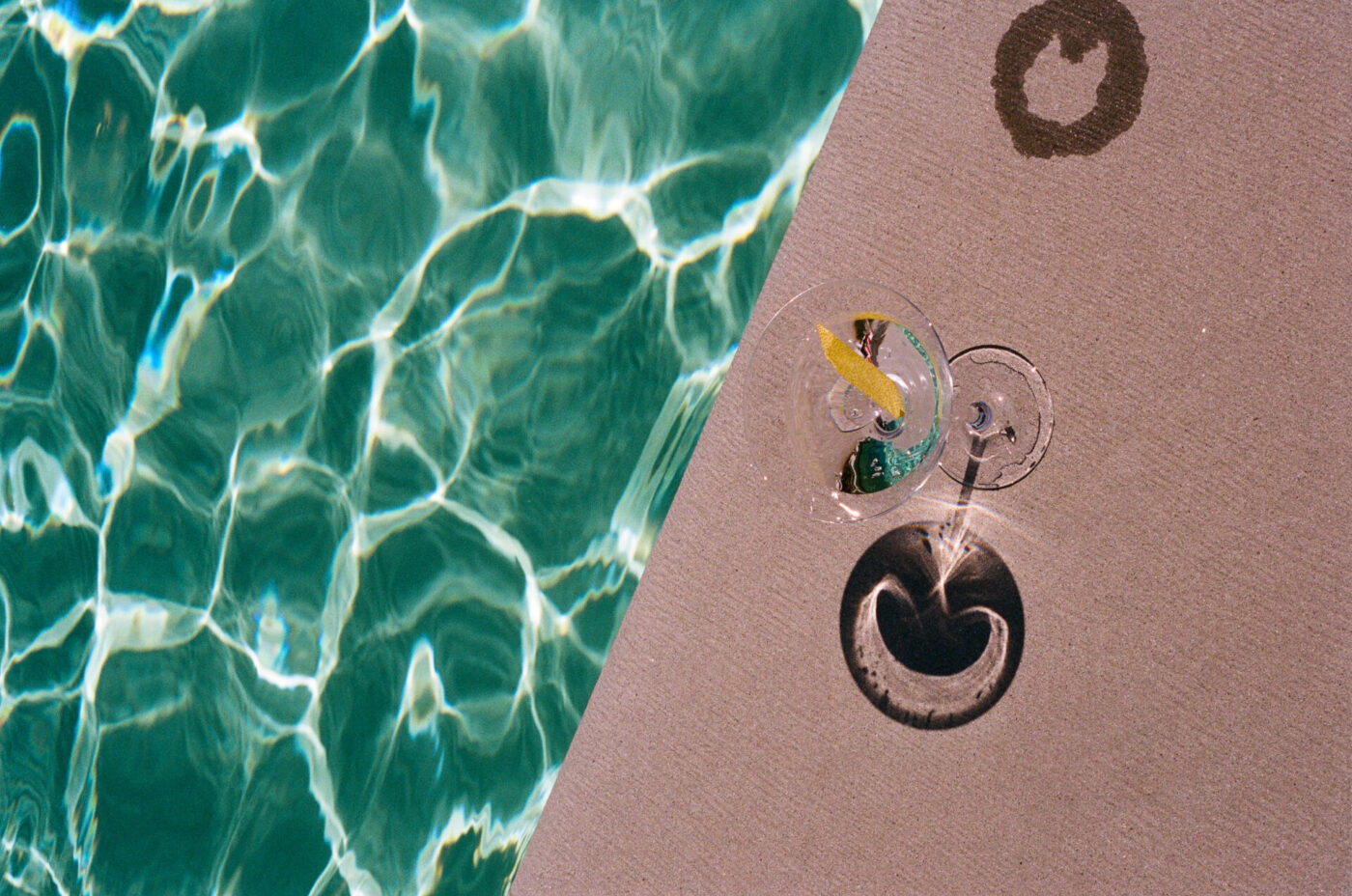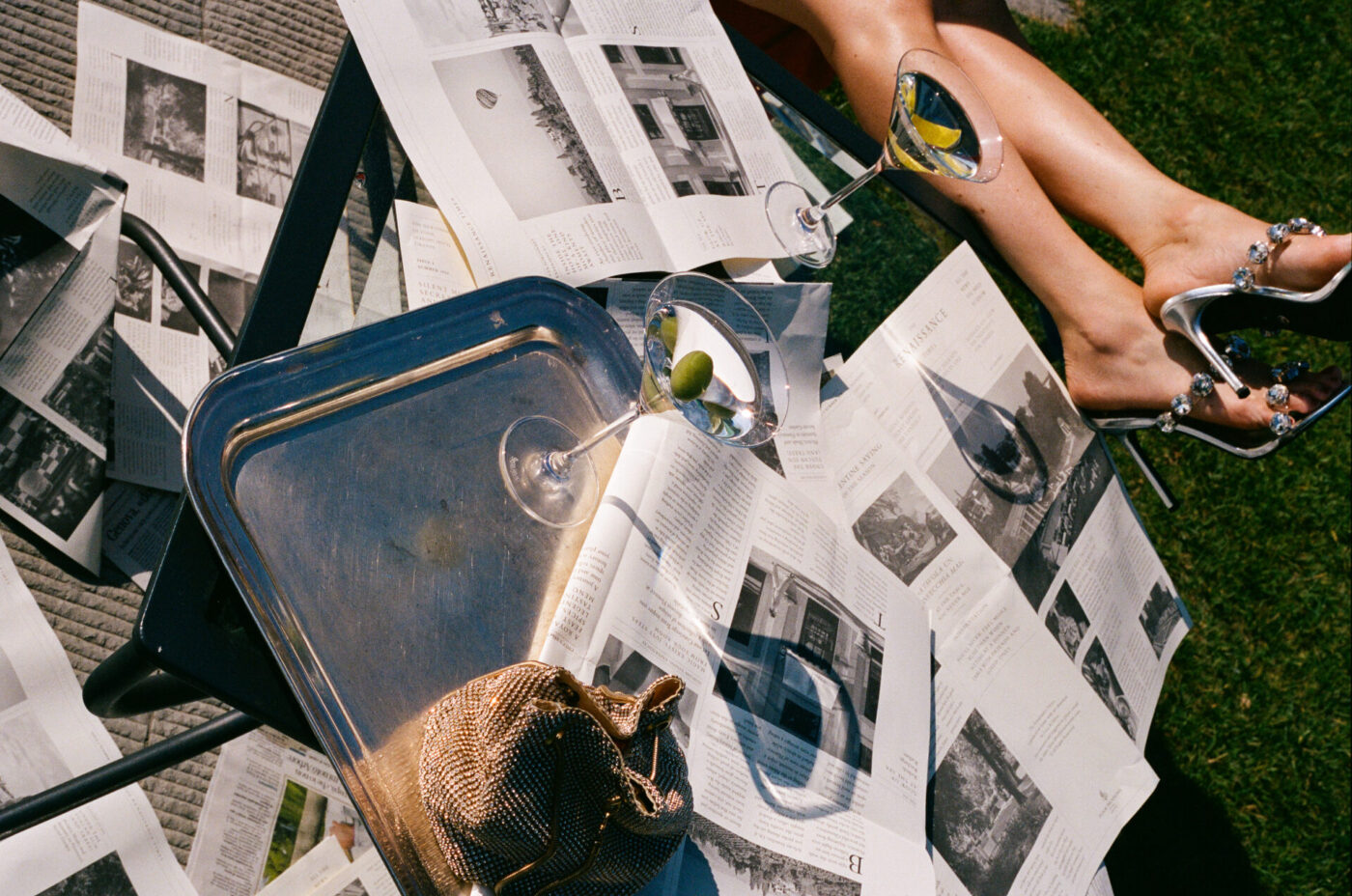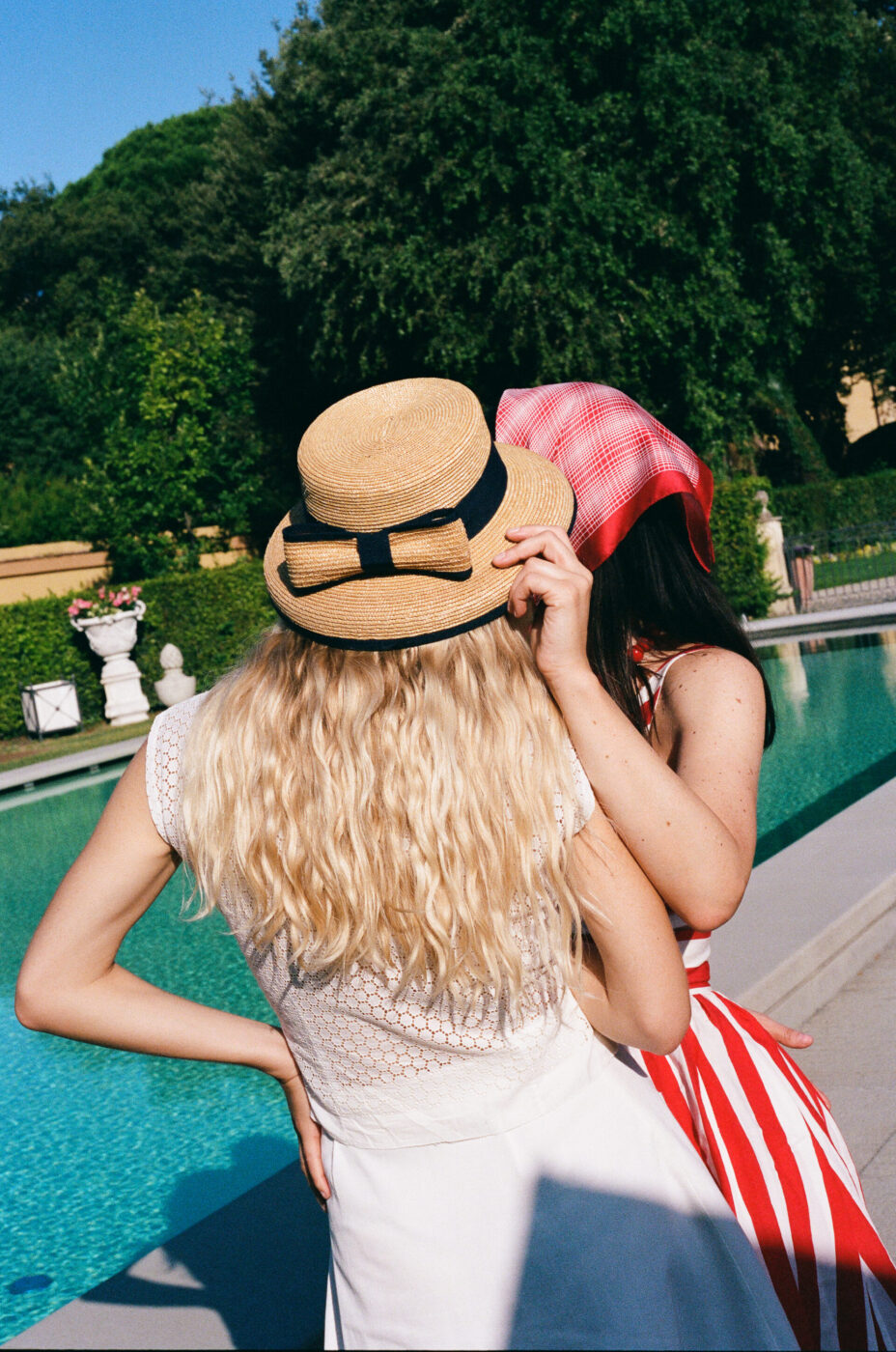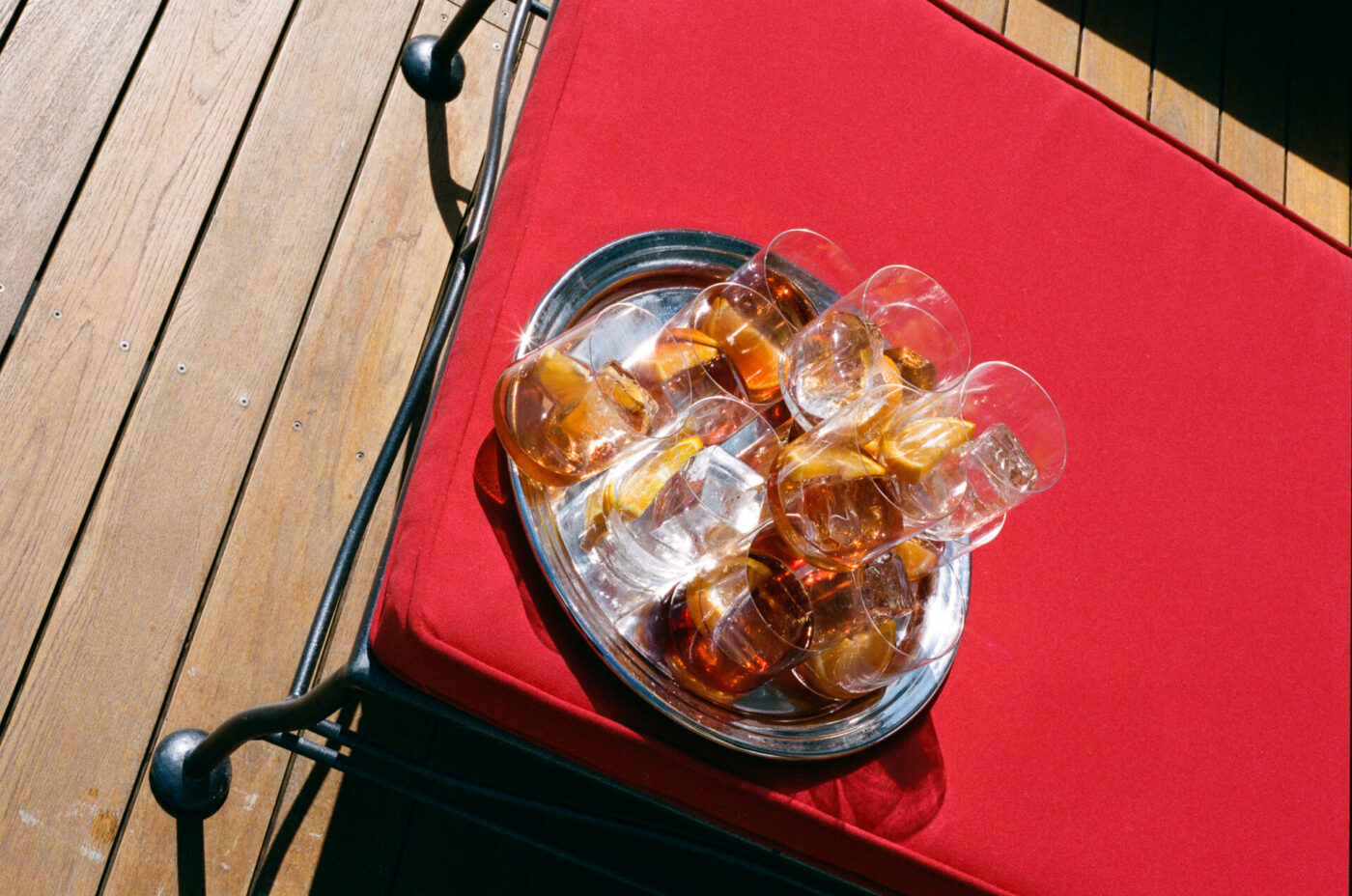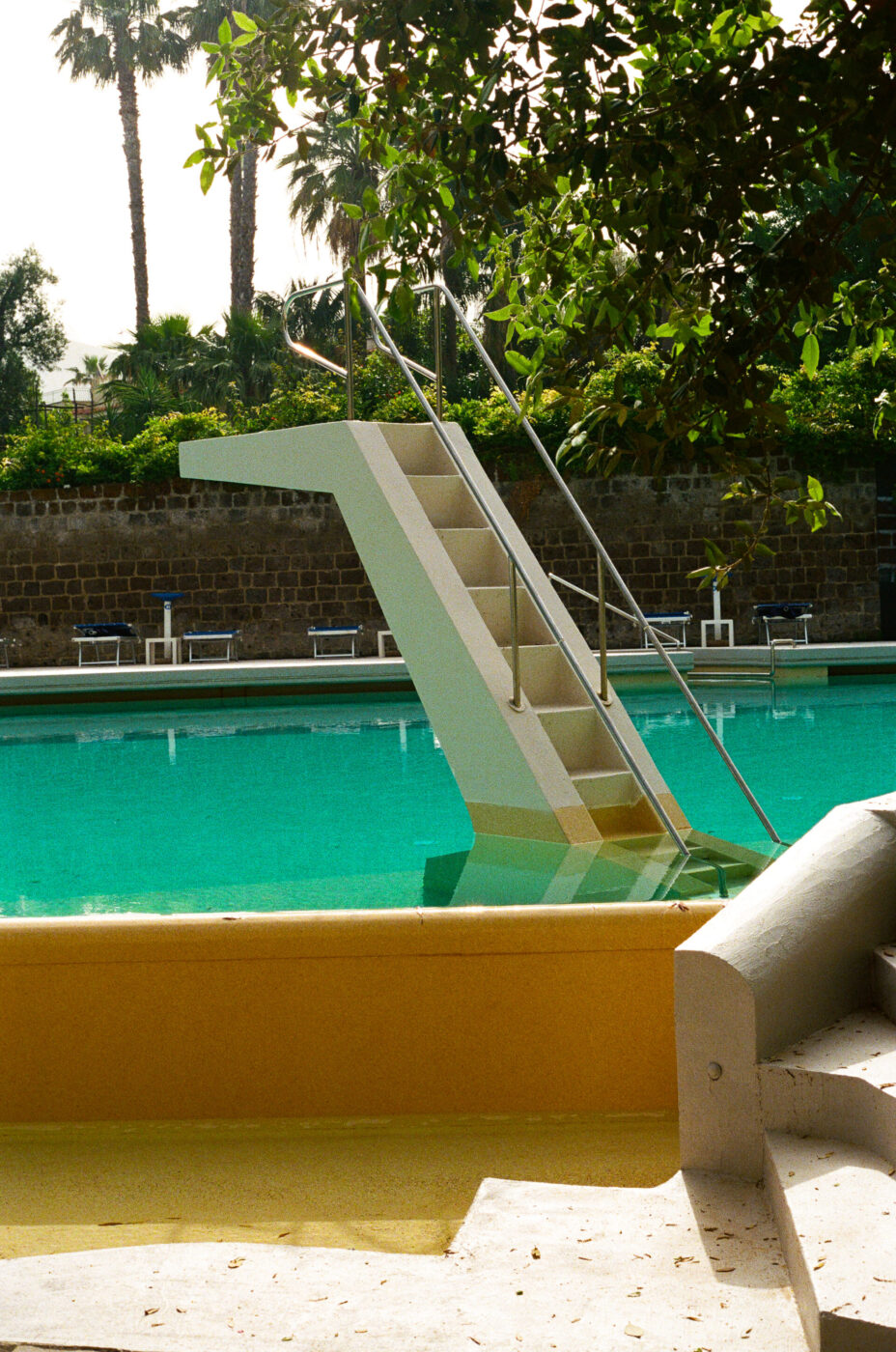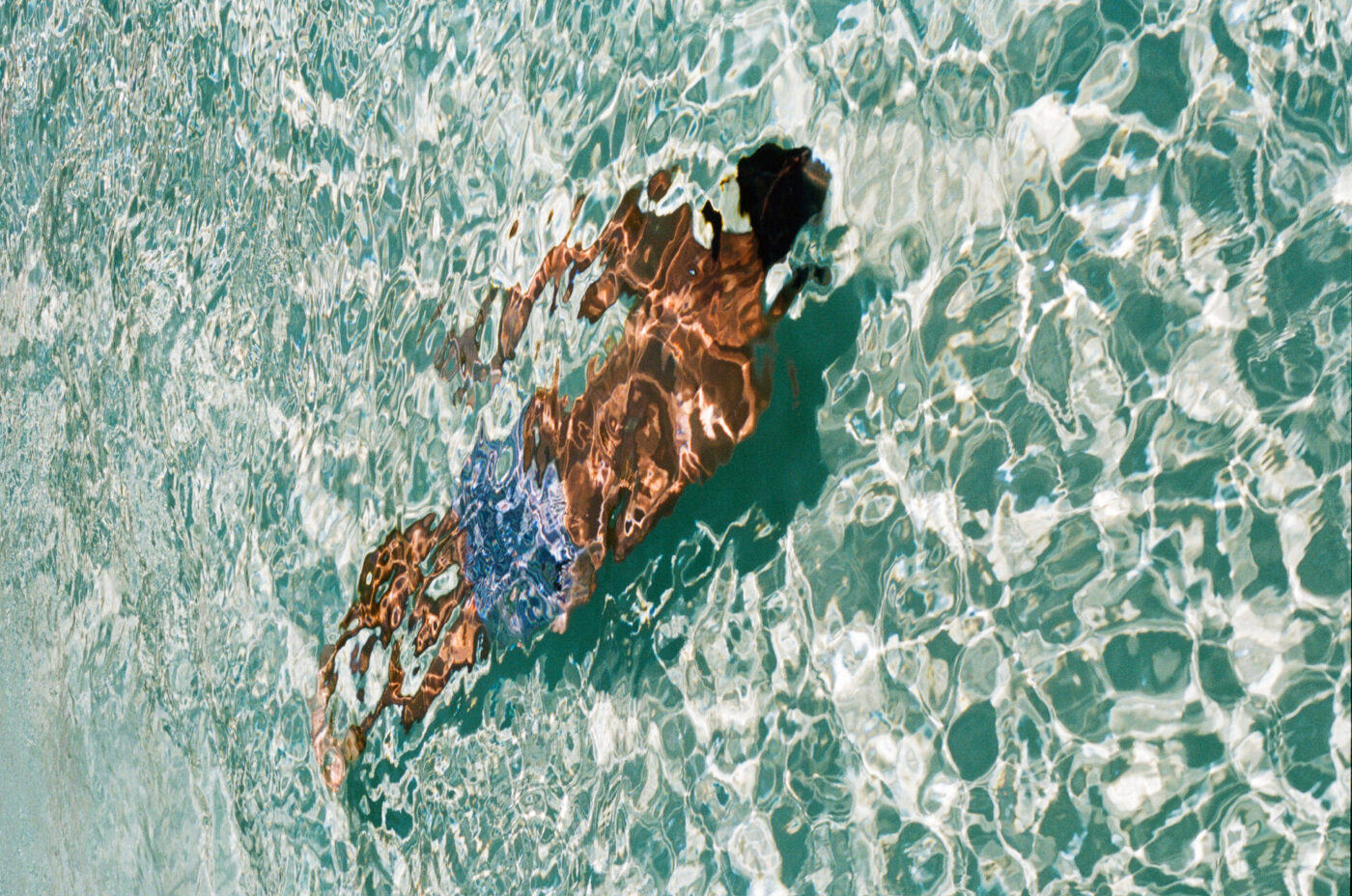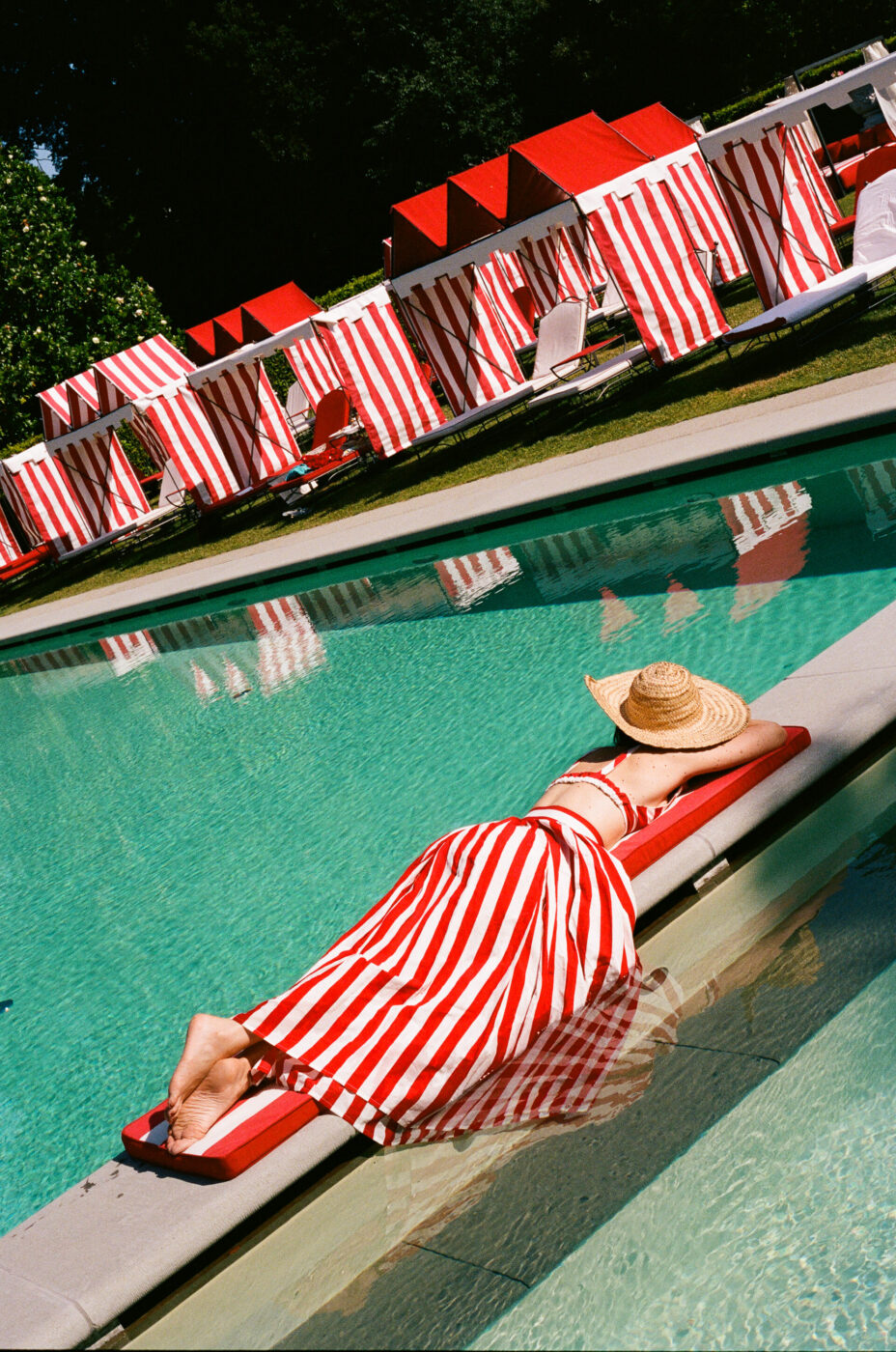Long before the jet-set era, Italy’s love affair with the pool began in Ancient Rome. At the great natationes (open-air swimming pools) of the Roman thermae, senators and laborers alike bathed side by side, not just to clean themselves but to gossip, flirt, and show off in public. It was a daily ritual that collapsed social boundaries, a kind of aquatic equalizer.
By the time the modern swimming pool re-emerged in the 20th century, it had undergone a full inversion. No longer communal, it was now the most exclusive feature of a private villa or resort. Milan’s Villa Necchi Campiglio—a Rationalist-style mansion completed in 1935—famously featured the city’s first private pool (only the second pool in all Milan, the first being a municipal one). Surrounded by a manicured lawn and a tennis court, the villa’s pool became a chic gathering spot for aristocratic house guests and a visual centerpiece of the home’s elegant lifestyle. Decades later, that same spirit would come to define Italy’s mid-century Dolce Vita era—with the swimming pool as its sparkling emblem.
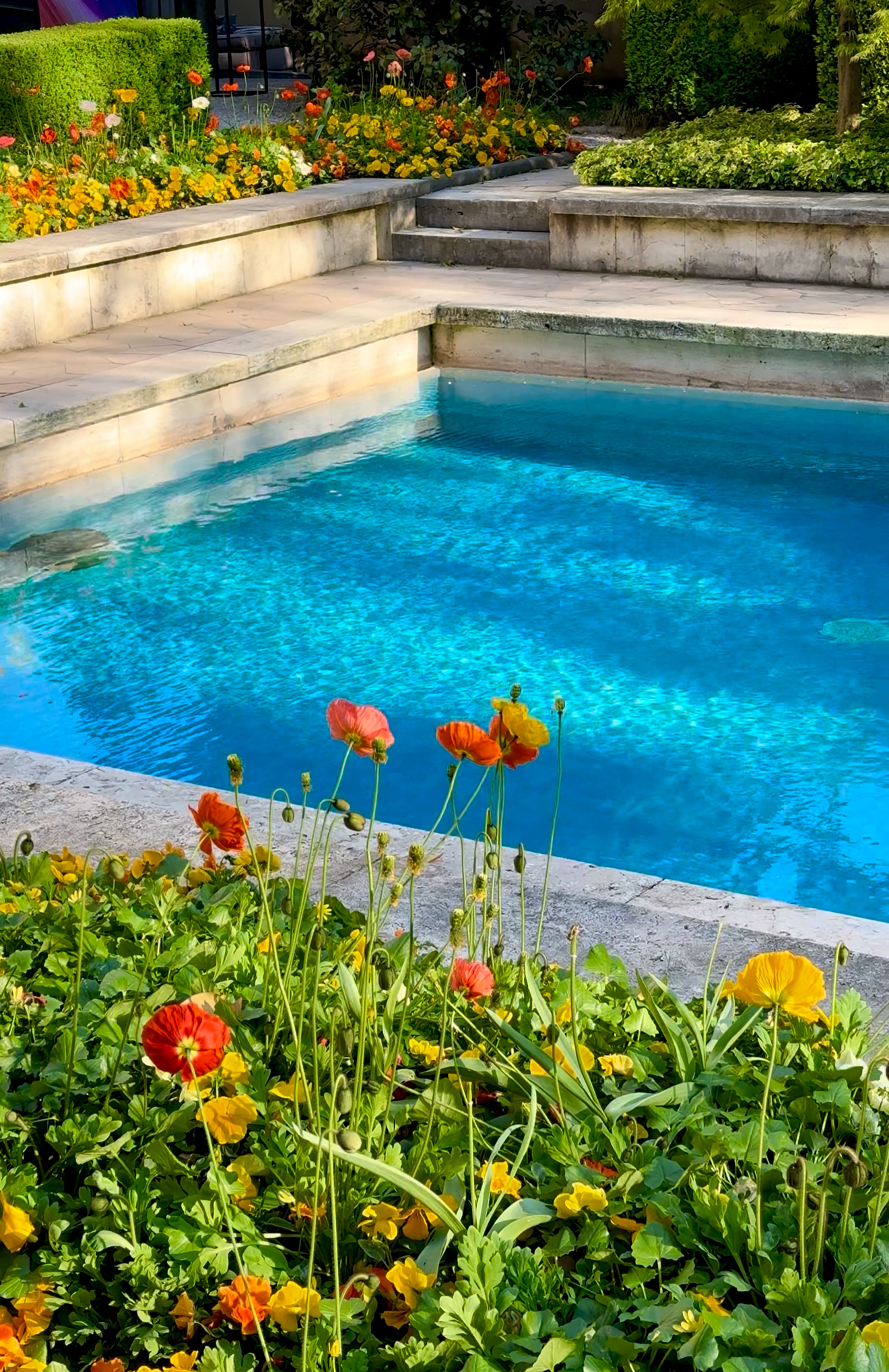
The pool at Villa Necchi Campiglio
By the 1950s and ‘60s, Italy had emerged from postwar austerity into an economic boom, and the world’s elite flocked to its sunny coasts and cities. In this Dolce Vita period—literally “the sweet life”—the swimming pool became the ultimate symbol of leisure as lifestyle. High society and Hollywood stars converged on Italy’s resorts, transforming pool decks into runways, and la dolce vita, as a concept, was epitomized by images of uninhibited ease: a Martini by the pool, sunglasses and stilettos on the sundeck, the Mediterranean shimmering just beyond the infinity edge. It’s no surprise that by the mid-1960s, swimming pools were popping up ubiquitously in global pop culture, from David Hockney’s paintings to fashion shoots and films.
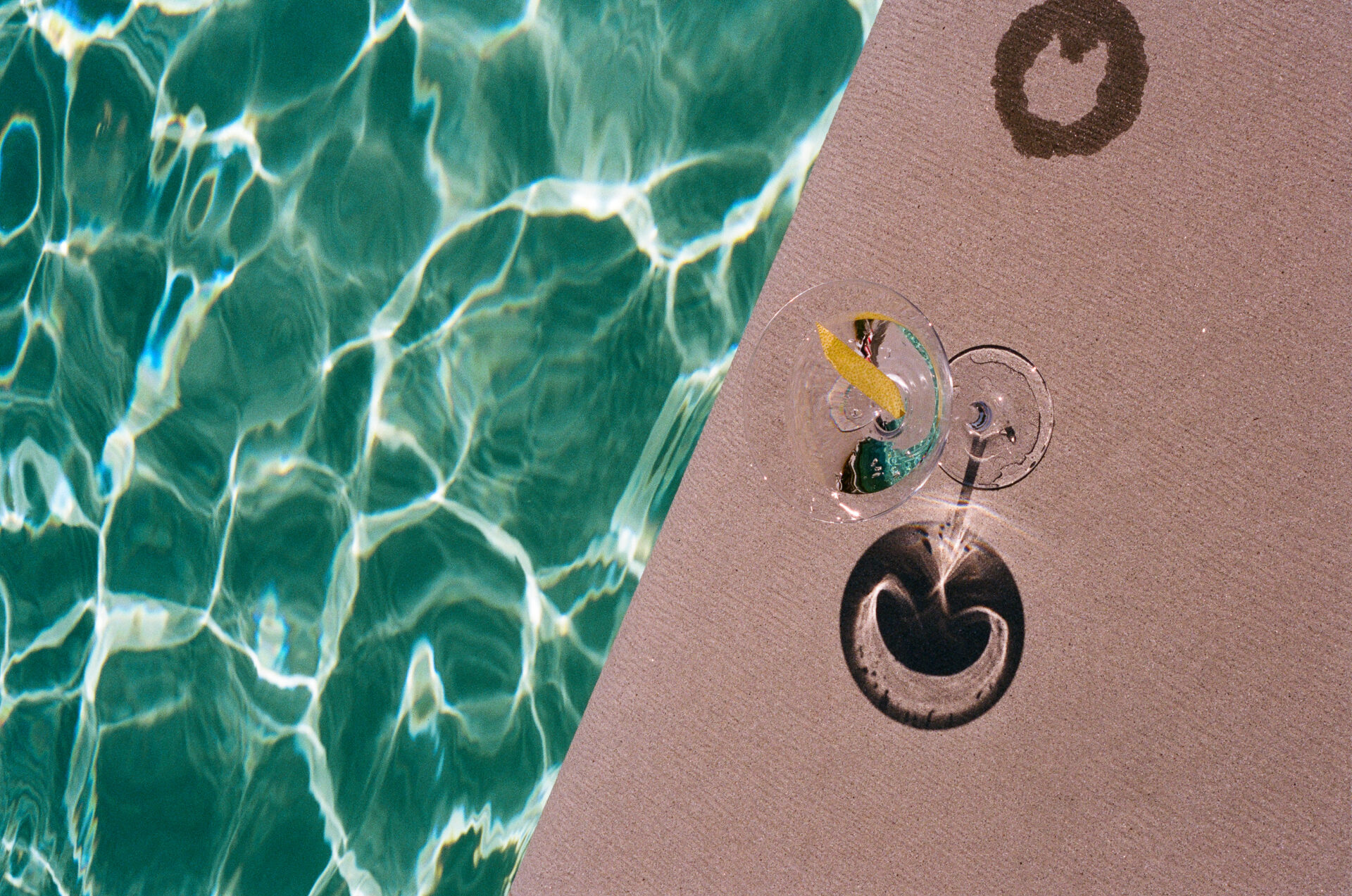
In Italy, Federico Fellini’s La Dolce Vita (1960) gave the world the enduring image of Anita Ekberg wading dreamlike through Rome’s Trevi Fountain—a scene so decadent and sensual that it’s been called “one of cinema’s most iconic scenes.”
The fountain was not a pool, of course, but other filmmakers soon echoed and played with this imagery. In Michelangelo Antonioni’s La Notte (1961), a film deliberately in dialogue with Fellini’s, a high-society party culminates with tipsy guests suddenly leaping into a swimming pool in their evening clothes, laughing and splashing with wild abandon in a direct nod to Ekberg’s fountain frolic. Just as one woman (Jeanne Moreau) is about to jump in, a friend stops her with the words “Don’t be foolish.”
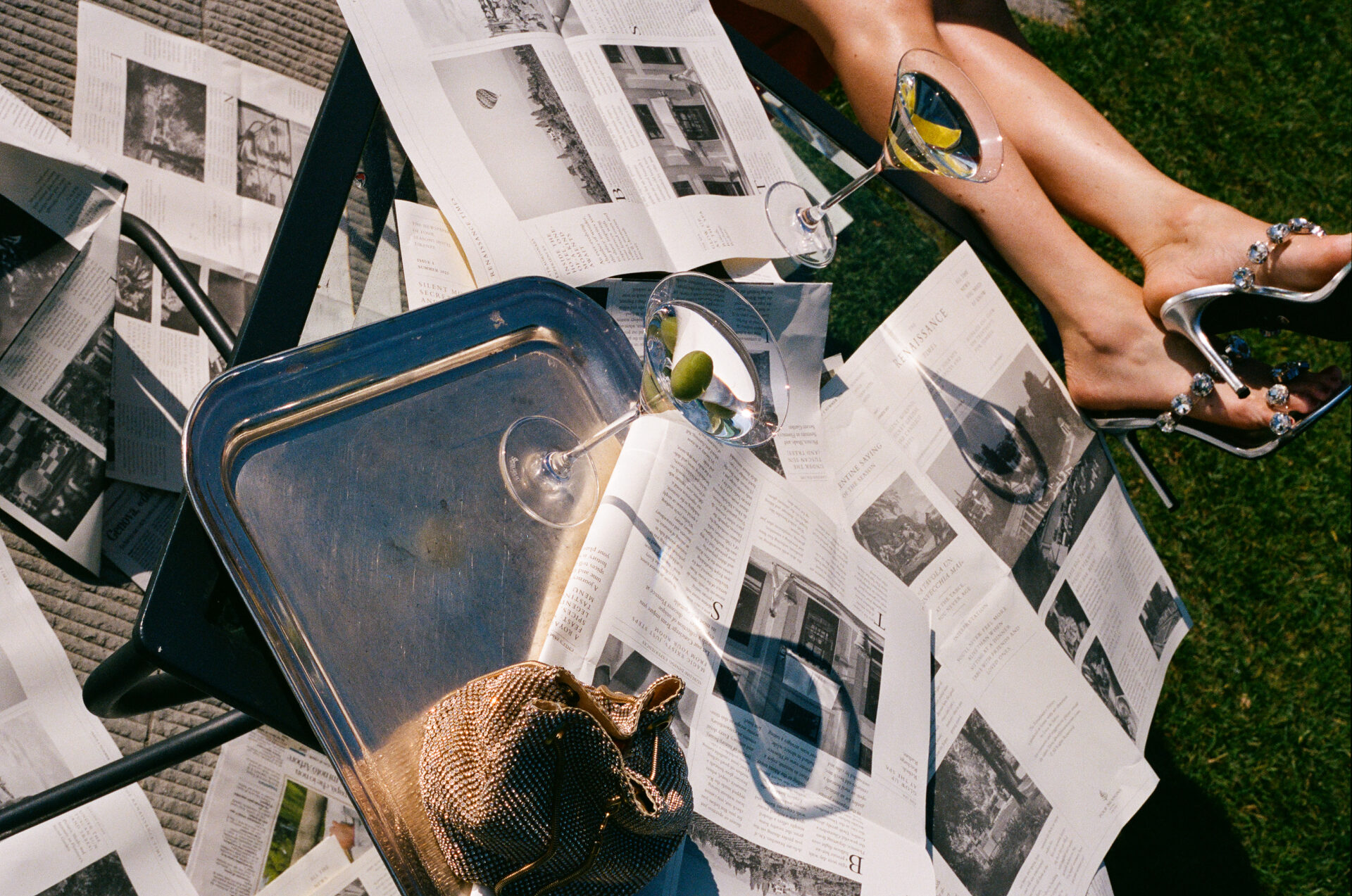
While filmmakers brought Italian poolside glamor to the screen, photographers captured it in still frames—and no one did it better than Slim Aarons. The American photographer practically defined mid-century “Jet Set” visual culture, and he famously quipped that he built his career on photographing “attractive people doing attractive things in attractive places.”
From the late 1950s through the ‘70s, Aarons spent every summer in Italy, lens in hand, documenting la dolce vita in full color. He had a knack for gaining access to exclusive worlds, and his photos read like aspirational postcards from paradise: socialite Dolores Guinness lounging seaside on the Costa Smeralda; film icons Marcello Mastroianni and Virna Lisi relaxing on a Sardinian yacht; American writer Gore Vidal, pen in hand on his villa’s terrace in Positano. In Aarons’s images, life itself looked like an endless holiday.
“Life there was rewarding,” Aarons said of his Italian summers; “the dollar was strong, the wine dolce, and the girls fantastic.”
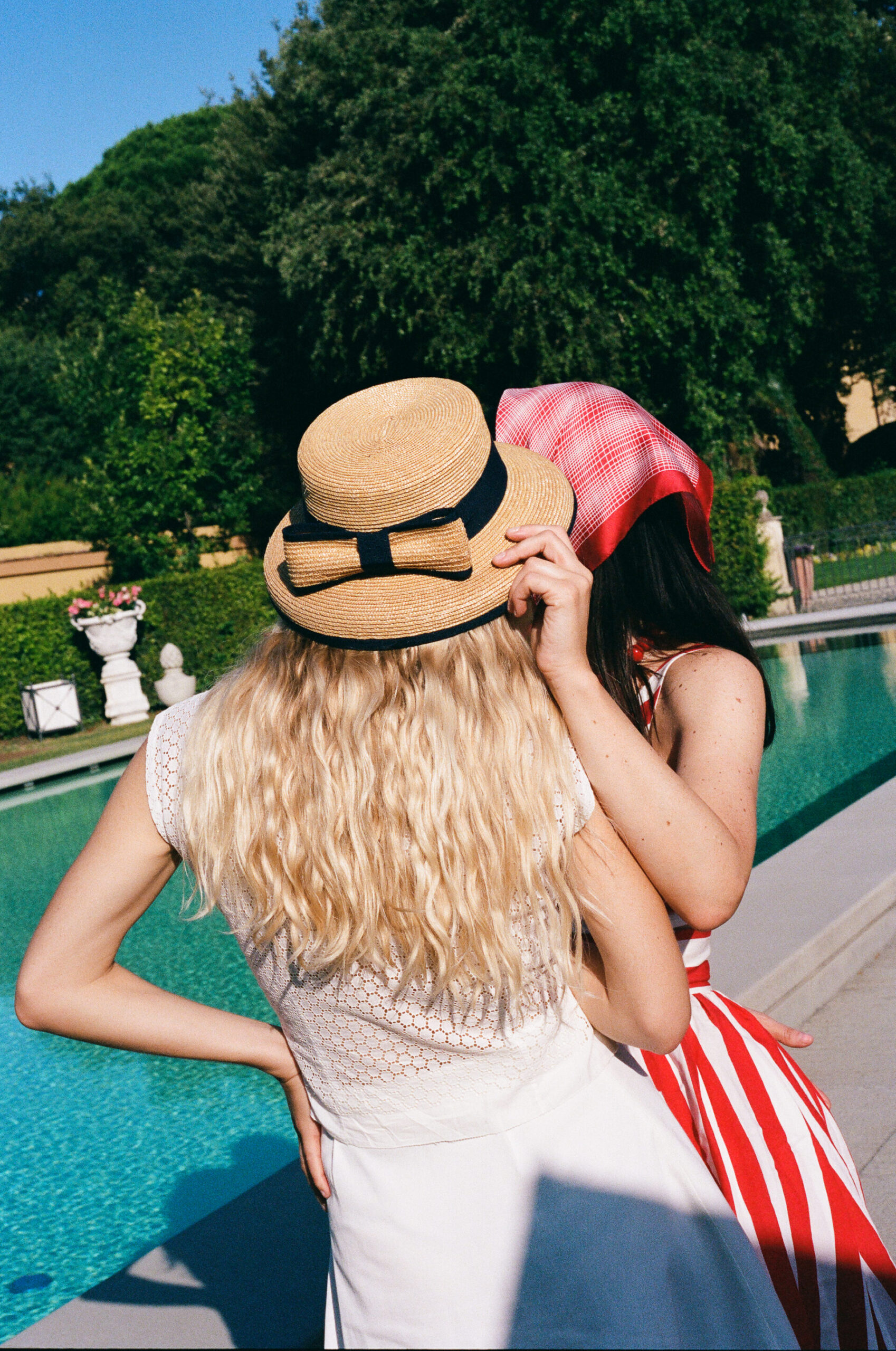
His most compelling shots were those taken poolside (so much so that the photobook Poolside with Slim Aarons was published in 2007), where the wealthy and beautiful basked in dolce far niente.
Women in boldly colored swimsuits and cat-eye sunglasses perch on diving boards, often as impeccably styled as if headed to a cocktail party—sometimes even sunbathing in diamond jewelry or stiletto heels for effect. Men in tailored swim trunks lounge under striped umbrellas, Negroni in hand. One famous shot from 1974, “Sunbathing in Capri”, shows slim, sun-kissed vacationers sprawled in eye-pleasing rows by the Hotel Punta Tragara’s cliffside pool. So ingrained is the iconography, you can sense the pool even though it’s out of frame.
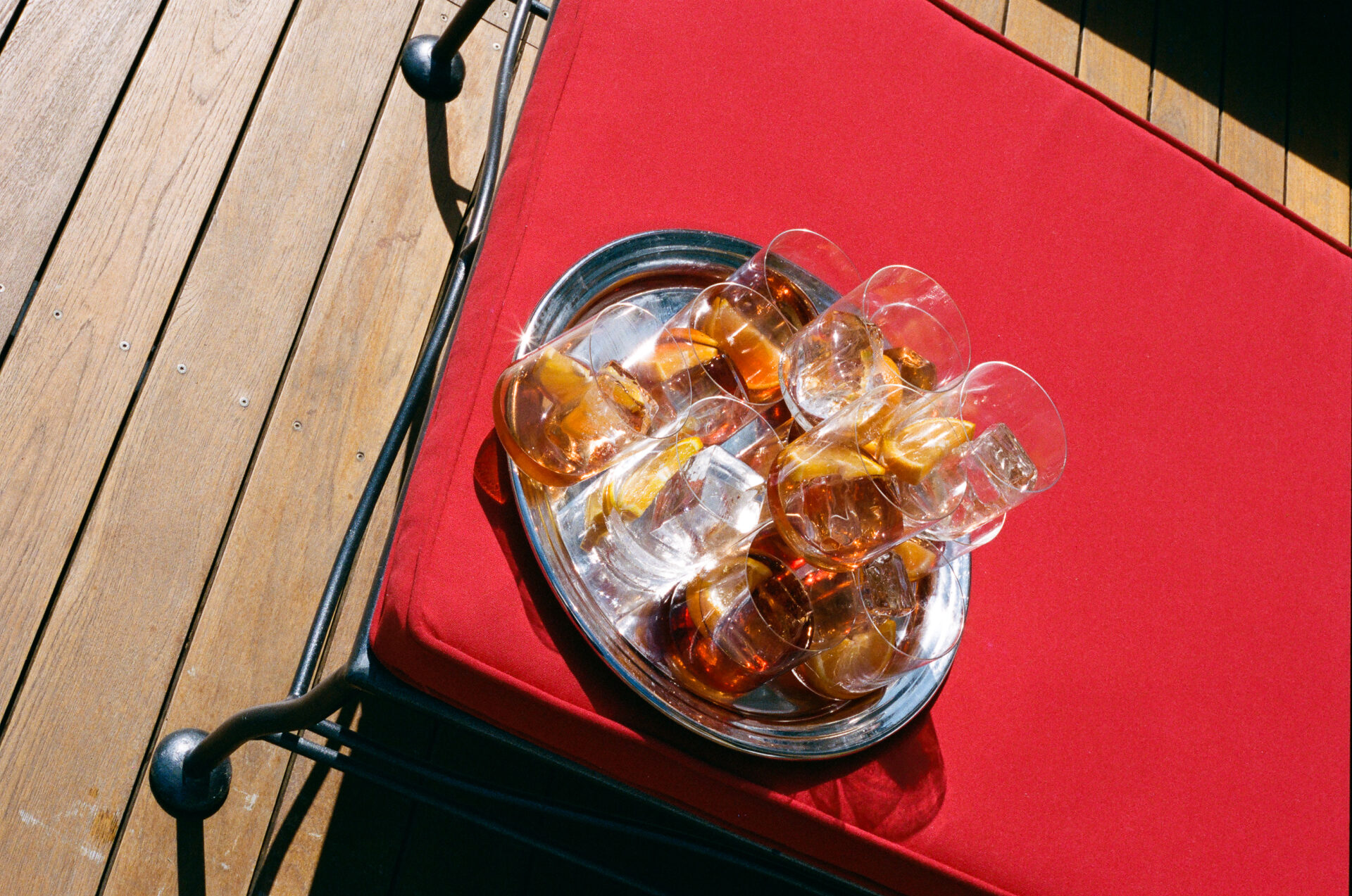
The elegance appears effortless (even if it was anything but)—exactly the image Italy was coming to represent. Aarons’ photographs, published in LIFE and other glossies, exported Italy’s poolside aesthetic worldwide, spreading the idea that leisure itself was the new luxury. The dream was doing nothing, but doing it beautifully.
Beyond film and photography, the actual pools of 1950s-70s Italy were themselves legendary characters. Across the peninsula, fashionable hotels and villas installed ever more lavish swimming pools. In 1966, the storied Villa d’Este hotel on Lake Como unveiled a pool that sits atop the lake’s surface; the heated, glassy rectangle appears to merge with the lake’s waters, an engineering marvel for the time. Gio Ponti’s Hotel Parco dei Principi in Sorrento, opened in 1962, featured a dazzling saltwater pool tiled in a custom blue-and-white geometric pattern, complete with a distinctive concrete diving board that’s doubled by the water’s reflection. He thought of the pool as a “water mirror for forest nymphs,” as domus reports.
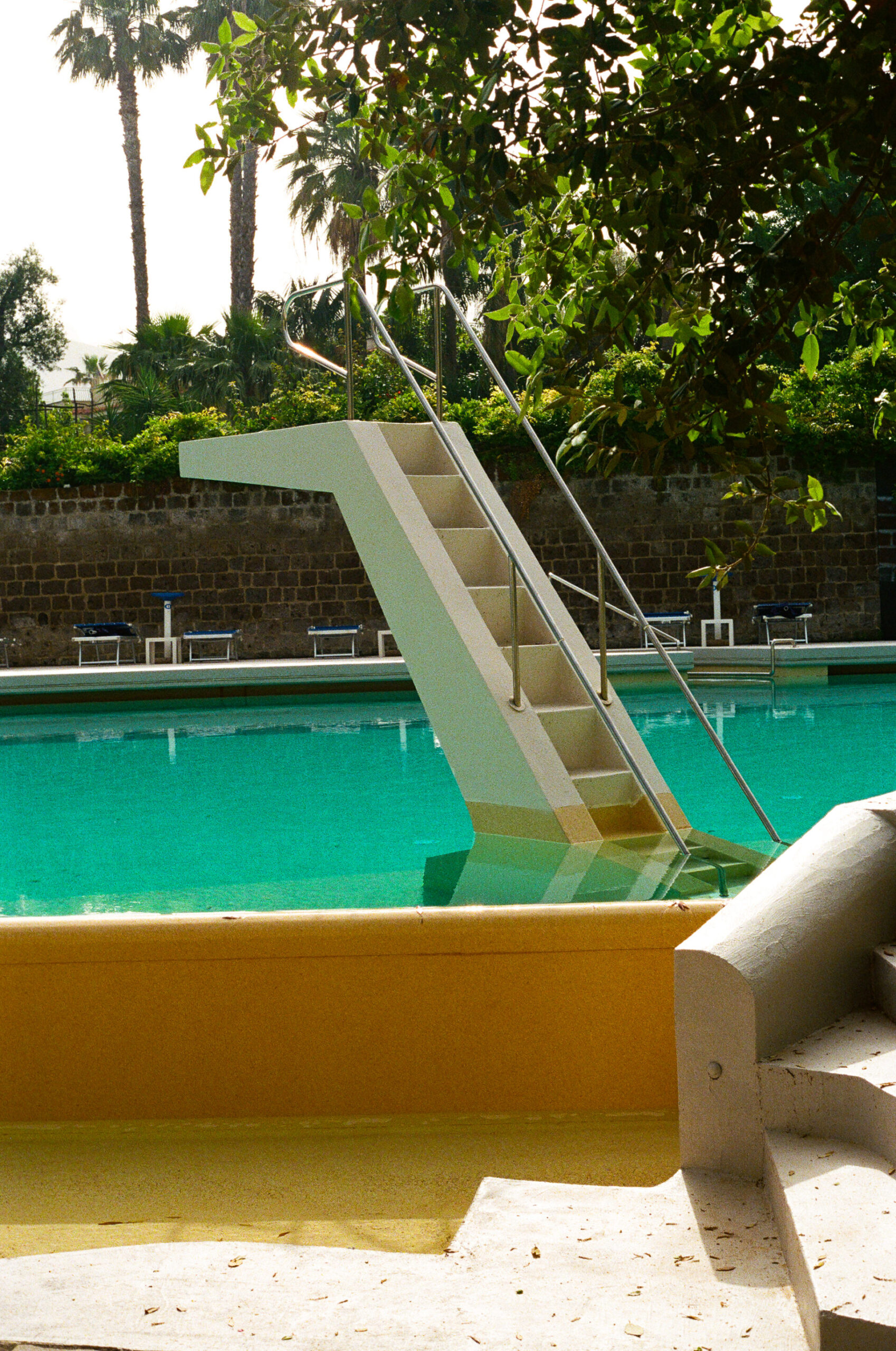
The pool at Hotel Parco dei Principi in Sorrento, designed by Gio Ponti
Meanwhile, opened in the 1950s by the Sersale family, Le Sirenuse hotel turned a former nobles’ palazzo into a hotspot in Positano, complete with a terraced pool overlooking the Amalfi Coast. By the ’60s, its emerald-green tiles and surrounding lemon trees formed one of the postcard images of la dolce vita. Swimming in that pool, perched high above Positano’s cascade of colorful houses and the sparkling sea, felt like starring in your own movie. Today, the Four Seasons Hotel Firenze channels Italy’s 1960s energy with Bagno Al Fresco, its new swimming pool—complete with retro red-and-white striped umbrellas and loungers—set in the Giardino della Gherardesca (one of the largest private gardens in Florence) behind the walls of its 15th-century palazzo once home to cardinals, nobles, and Medici allies.
These pools were (and are) places to see and be seen, much as the Roman baths had been, but now with the eyes of paparazzi and Playboy photographers lurking too. (The term “paparazzo” itself comes from Fellini’s La Dolce Vita, and the real paparazzi often snapped candids of movie stars hosting bikini-clad gatherings at the pool.) The Italian pool had become a cultural icon in its own right—a potent image of post-war optimism, wealth, and pleasure that circulated in magazines, films, and the popular imagination.
If the dolce vita era cast the swimming pool as an emblem of Italian luxury, that legacy has only grown—sometimes with a twist. Modern visual narratives such as Luca Guadagnino’s A Bigger Splash (2015)—a remake of La Piscine (1969)—and HBO’s The White Lotus: Sicily (Season 2, 2022) play on the connotations of the swimming pool, using them to create sly cultural commentary. In A Bigger Splash, the characters are holidaying on Pantelleria with the Mediterranean steps away, yet prefer their chlorinated sanctuary (that of the real-world Tenuta Borgia), around which the film revolves. But simmering passions eventually explode into a midnight confrontation that turns deadly, and the morning after, a drained pool poignantly signifies the collapse of their carefully staged paradise.
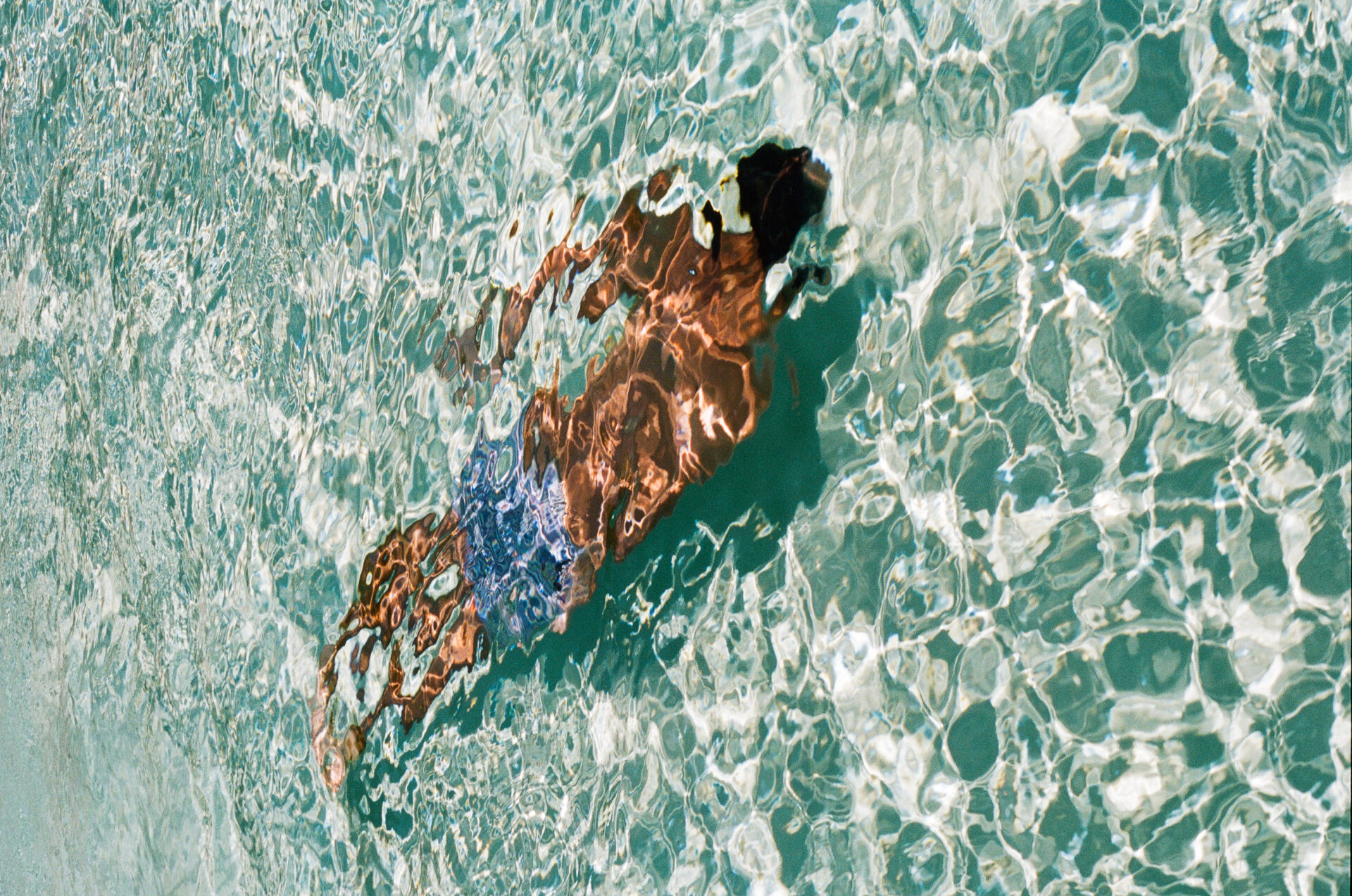
Likewise, The White Lotus: Sicily mines its resort’s pool for satirical drama, depicting it as an exclusive oasis of wealth that exists in an artificial bubble apart from the surrounding poverty of coastal Sicily. Around this infinity pool, social and sexual fault lines surface, especially when local women Lucia and Mia must literally infiltrate to partake in the pleasures of the water, sneaking in as unauthorized guests until a paying patron grants them access. These works complicate the pool’s imaginary, its sparkling surface reflecting Italy’s contemporary anxieties and class divides even as the characters continue to chase la dolce vita’s promise of indulgence and escape.
From ancient Roman natatio where senators and commoners mingled to Slim Aarons’ Kodachrome queens lounging poolside in Capri, the pool in Italy has always been more than the sum of its parts. Today, when we think of la dolce vita, that mental montage inevitably includes water—the line between which reality and movie-like fantasy blurs.
“Don’t be foolish,” the woman’s friend had said in La Notte. But what the scene understands, and what the Italian pool has always offered, is foolishness. It’s a setting that suspends reality, no matter what’s unfolding beyond the edge.
However curated or contrived, the pool is an exit hatch—a way out, or at least a brief illusion of one.
